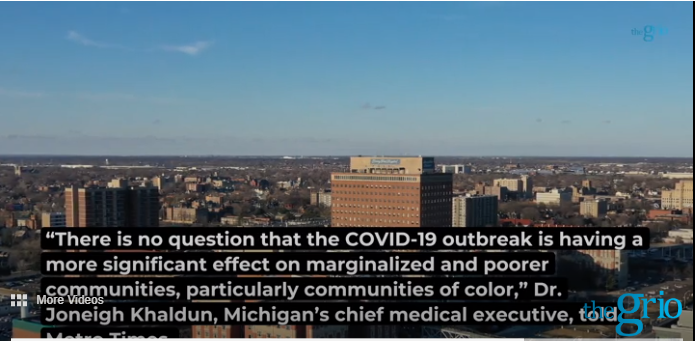Recent research reveals health data on the racial breakdown of the COVID-19 pandemic in the state; Blacks make up 12% of its population but 40% of affected cases
A disproportionate number of Black people in Michigan are dying from the novel coronavirus, compared to other races.
Black people make up just 12 percent of Michigan’s total population, yet accounted for 40 percent of the state’s 417 COVID-19 deaths as of Thursday, according to data from the Michigan Department of Health and Human Services (MDHHS), obtained by Detroit Metro Times. This compares to 26 percent of deaths among white people, 30 percent unknown and four percent classified as mixed race or other.
In addition, Black people made up 35 percent of the state’s 10,791 coronavirus cases, compared with 25 percent white people, 34 percent unknown and six percent who represent other races.
“There is no question that the COVID-19 outbreak is having a more significant effect on marginalized and poorer communities, particularly communities of color,” Dr. Joneigh Khaldun, Michigan’s chief medical executive, told Metro Times.
This marks the first time Michigan released health data on the racial breakdown of the coronavirus pandemic. The breakdown was sobering and left some questioning the disparity among racial groups.
Khaldun said there is a reason for it.
“While COVID-19 can infect anyone regardless of race or class, African Americans have historically been more likely to have higher rates of chronic medical conditions such as heart disease, diabetes, and cancer in the United States. We know that people with these underlying medical conditions are more likely to become severely ill from COVID-19,” Khaldun told Metro Times.
Plus, systemic racism and longstanding economic inequality among races in Michigan plays a role, according to the news site.
Michigan has a disproportionate number of Black people living in poverty. Studies illustrate that people living in poverty have a greater chance of health illnesses and fatality. In terms of contracting the coronavirus, poorer people are more apt to rely on public transportation, where they are around large groups of people, live in apartment buildings with numerous people, and work at service industry jobs where they are also around the public.

